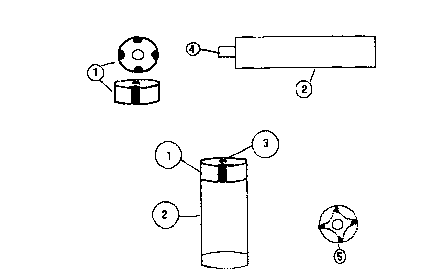Some of the information on this Web page has been provided by external sources. The Government of Canada is not responsible for the accuracy, reliability or currency of the information supplied by external sources. Users wishing to rely upon this information should consult directly with the source of the information. Content provided by external sources is not subject to official languages, privacy and accessibility requirements.
Any discrepancies in the text and image of the Claims and Abstract are due to differing posting times. Text of the Claims and Abstract are posted:
| (12) Patent Application: | (11) CA 2290023 |
|---|---|
| (54) English Title: | METHOD OF MAKING ENDMILLS |
| (54) French Title: | PROCEDE DE PRODUCTION DE FRAISES |
| Status: | Deemed Abandoned and Beyond the Period of Reinstatement - Pending Response to Notice of Disregarded Communication |
| (51) International Patent Classification (IPC): |
|
|---|---|
| (72) Inventors : |
|
| (73) Owners : |
|
| (71) Applicants : |
|
| (74) Agent: | GOWLING WLG (CANADA) LLP |
| (74) Associate agent: | |
| (45) Issued: | |
| (86) PCT Filing Date: | 1998-06-10 |
| (87) Open to Public Inspection: | 1998-12-17 |
| Availability of licence: | N/A |
| Dedicated to the Public: | N/A |
| (25) Language of filing: | English |
| Patent Cooperation Treaty (PCT): | Yes |
|---|---|
| (86) PCT Filing Number: | PCT/SE1998/001113 |
| (87) International Publication Number: | SE1998001113 |
| (85) National Entry: | 1999-11-09 |
| (30) Application Priority Data: | ||||||
|---|---|---|---|---|---|---|
|
The present invention relates to an endmill provided with cutting edges of cBN
or PCD and consisting of a shank part and a part containing the cBN or PCD
brazed to the shank. The latter part is in the form of a disc in which the
superhard material is present in a groove in the envelope surface and extends
from one end surface to the other. After brazing the disc to the shank, the
body obtained is ground to an endmill with cutting edges formed of superhard
material. In a preferred embodiment, the shank is provided with a tenon
against which the part containing the superhard material is brazed. This
minimises the risk of braze joint failure and provides an endmill with several
cutting edges which can be achieved at a low cost.
L'invention concerne une fraise dotée d'arêtes de coupe en nitrure de bore cubique ou en diamant polycristallin, comprenant une partie queue et un élément contenant le nitrure de bore cubique ou le diamant polycristallin. Cet élément, fixé à la queue par brasage, a la forme d'un disque dans lequel le matériau extra-dur est présent dans une rainure pratiquée à la surface de l'enveloppe et s'étend de la face d'une extrémité à la face de l'autre extrémité. Une fois le disque fixé à la queue par brasage, le corps ainsi obtenu est usiné pour donner une fraise dotée d'arêtes de coupe en matériau extra-dur. Dans un mode de réalisation préféré, la queue est dotée d'un tenon sur lequel l'élément contenant le matériau extra-dur est fixé par brasage. Cela réduit le risque de défaillance aux points de brasage et permet la fabrication à faible coût d'une fraise pourvue de plusieurs arêtes de coupe.
Note: Claims are shown in the official language in which they were submitted.
Note: Descriptions are shown in the official language in which they were submitted.

2024-08-01:As part of the Next Generation Patents (NGP) transition, the Canadian Patents Database (CPD) now contains a more detailed Event History, which replicates the Event Log of our new back-office solution.
Please note that "Inactive:" events refers to events no longer in use in our new back-office solution.
For a clearer understanding of the status of the application/patent presented on this page, the site Disclaimer , as well as the definitions for Patent , Event History , Maintenance Fee and Payment History should be consulted.
| Description | Date |
|---|---|
| Inactive: IPC from MCD | 2006-03-12 |
| Application Not Reinstated by Deadline | 2004-06-10 |
| Inactive: Dead - RFE never made | 2004-06-10 |
| Deemed Abandoned - Failure to Respond to Maintenance Fee Notice | 2004-06-10 |
| Inactive: Abandon-RFE+Late fee unpaid-Correspondence sent | 2003-06-10 |
| Inactive: Cover page published | 2000-01-12 |
| Inactive: IPC assigned | 2000-01-10 |
| Inactive: First IPC assigned | 2000-01-10 |
| Letter Sent | 1999-12-16 |
| Inactive: Notice - National entry - No RFE | 1999-12-16 |
| Application Received - PCT | 1999-12-14 |
| Application Published (Open to Public Inspection) | 1998-12-17 |
| Abandonment Date | Reason | Reinstatement Date |
|---|---|---|
| 2004-06-10 |
The last payment was received on 2003-05-15
Note : If the full payment has not been received on or before the date indicated, a further fee may be required which may be one of the following
Patent fees are adjusted on the 1st of January every year. The amounts above are the current amounts if received by December 31 of the current year.
Please refer to the CIPO
Patent Fees
web page to see all current fee amounts.
| Fee Type | Anniversary Year | Due Date | Paid Date |
|---|---|---|---|
| Basic national fee - standard | 1999-11-09 | ||
| Registration of a document | 1999-11-09 | ||
| MF (application, 2nd anniv.) - standard | 02 | 2000-06-12 | 2000-05-25 |
| MF (application, 3rd anniv.) - standard | 03 | 2001-06-11 | 2001-06-06 |
| MF (application, 4th anniv.) - standard | 04 | 2002-06-10 | 2002-05-22 |
| MF (application, 5th anniv.) - standard | 05 | 2003-06-10 | 2003-05-15 |
Note: Records showing the ownership history in alphabetical order.
| Current Owners on Record |
|---|
| SANDVIK AB |
| Past Owners on Record |
|---|
| PETER LITTECKE |